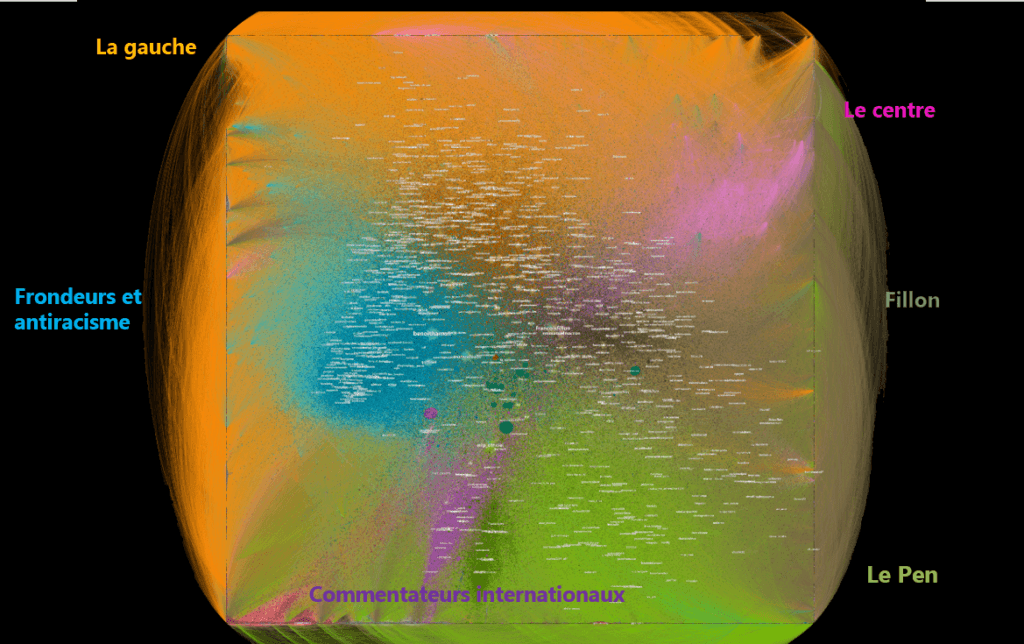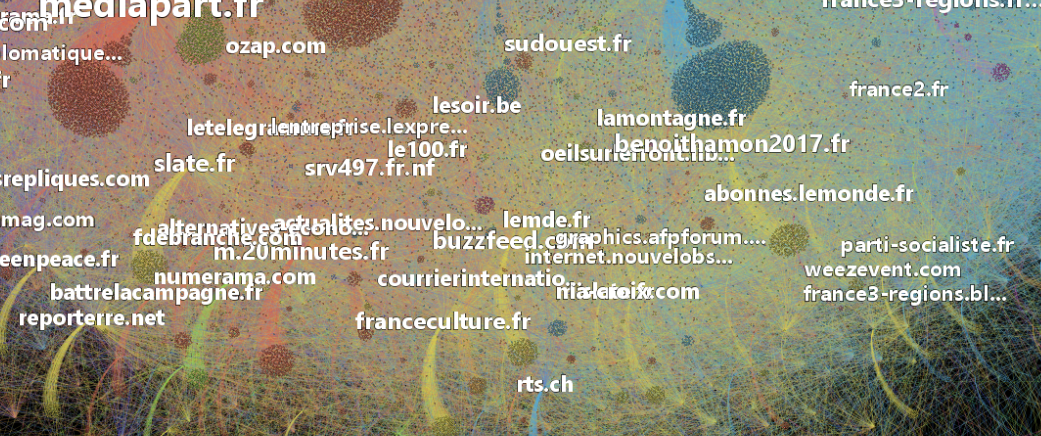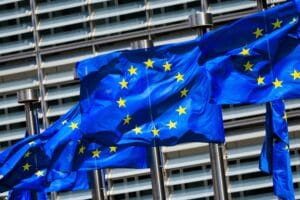Sommaire
Are there any information bubbles in the presidential campaign?

During the American elections, there was a lot of talk about information bubbles. Social networks are said to lock us into information communities into which we gradually fall. So it was very interesting to do the exercise on Twitter, the social network where, by definition, you can follow anyone, and where there is no timeline algorithm. Analysis via Visibrain.
I. 10 million tweets mapped
The first step was to extract more than 10m tweets about the presidential election. I then mapped all the interactions. The bigger a point, the more it was mentioned by other players. Each colour represents a community according to a clustering algorithm. In reality, the main camps can be found in the interactions. This shows de facto that we are in the same situation as on Facebook: we are interacting with our denominational bubble on a political level.
 At the same time, I carried out the same exercise for 500,000 tweets about the presidential election (one week's worth of tweets, taken between 7 and 15 April), but this time I observed interactions not between Twitter accounts and Twitter accounts, but between accounts and domain names:
At the same time, I carried out the same exercise for 500,000 tweets about the presidential election (one week's worth of tweets, taken between 7 and 15 April), but this time I observed interactions not between Twitter accounts and Twitter accounts, but between accounts and domain names: Here again, each campaigner for each candidate is locking himself into information bubbles. In filtered form, it looks like this:
Here again, each campaigner for each candidate is locking himself into information bubbles. In filtered form, it looks like this: As this is very general, we'll look at the main domain names in information bubbles.
As this is very general, we'll look at the main domain names in information bubbles.Sources of information by candidate
To filter communities, I used the communities of the 10 million tweets. For each candidate, I took the 1,000 most active activists within the community, which provides a table of domains via Visibrain (over the last two months). Secondly, the map shows the zoom on the part of the domain interaction map that is specific to the community. (So it's not the same data that's shown).
1. Le Pen
 Le Pen's sources are very close to those of the Fillon clan, but on much more conspiracy-oriented sites. The top 3 are:
Le Pen's sources are very close to those of the Fillon clan, but on much more conspiracy-oriented sites. The top 3 are:- Boulevard Voltaire
- FrDeSouche
- Le Figaro
 The map shows the presence of Sputnik, égalité et réconciliation and other sites that are the perfect conspiracy kit.
The map shows the presence of Sputnik, égalité et réconciliation and other sites that are the perfect conspiracy kit.2.Fillon
 Quite close to Marine Le Pen, François Fillon's communities consult first :
Quite close to Marine Le Pen, François Fillon's communities consult first :- Le Figaro
- Valeurs Actuelles
- L'Opinion

3. Macron
 Macron is more consultative:
Macron is more consultative:- Le Figaro
- Le Monde
- Libération

4. Melenchon
 Mélenchon's communities share more:
Mélenchon's communities share more:- Le Monde
- L'Huffington Post
- FranceTvInfo

5. Hamon
 Hamon activists share more information from :
Hamon activists share more information from :- Libération
- Canal +
- Le Monde

Conclusions
Yes, we have information bubbles. And no, it's not an algorithm that sets them for us. We consciously jump into them. This little analysis of Twitter makes this fairly easy to establish. However, we need to be cautious insofar as most of the people expressing their views on the presidential election in the press are activists and are therefore more likely to knowingly enclose themselves in bubbles. Everyone quotes the main media. However, it is frightening to see the information bubble formed by Fillon and Le Pen, who are moving away from the traditional media and relaying sites that can be described as conspiracy sites.



